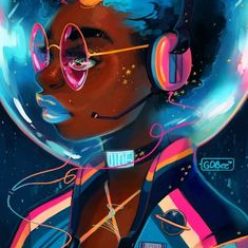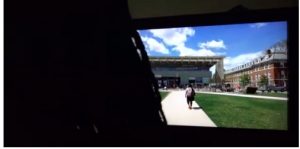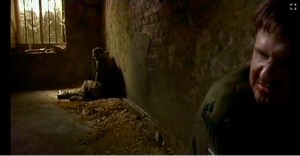I’m A Gamer Now!!
Before completing this assignment, I have never played a video game in my life. I 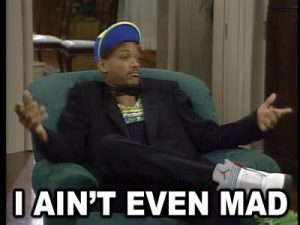 enjoyed watching my friends play video games, however, I was not motivated enough to uncover the mystery that was operating the game controller.
enjoyed watching my friends play video games, however, I was not motivated enough to uncover the mystery that was operating the game controller.
When I discovered that Grand Theft Auto V was on the syllabus, I was ecstatic. This was my time to reveal my hidden gaming skills and finally mastering the game controller. I walked into Sawyer grinning uncontrollably. I charged towards the library attendant at the front desk of Sawyer and politely requested a PS4 controller. I wanted to appear “cool” so I made sure that the game cover was exposed. I wanted all of Williams to know that there was a true gamer in Sawyer library.
Guys, I am officially a gamer. 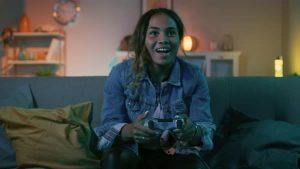
As soon as I settled into the gaming room, I was greeted by the GTA: V character reel. I was really excited to play the game, however, I could not shake the level of discomfort that developed as each game character was revealed. All the stereotypes were out on display. The black men were gang affiliated and the women were commodified and oversexualized. Each character came with a specific background that spoke to the community that best represented their identity. Because “the game world is not simply a sandbox where entirely new sociopolitical situations are designed and enacted and then exported into the physical world,” the projected communities highlight a ghettocentric view of environment and community(Leonard 131). I believe that the game is not capable of representing authentic depictions of people from varying racial identities. Instead, the game was successful at reinforcing stereotypes.
Additionally, there was a disproportionate representation of men and woman. In “Live in Your World, Play in Ours: Race, Video Games, and Consuming the Other” by David Leonard, Leonard highlights that “64% of the characters are male, 19% are nonhuman, and only 17% are female. More specifically, 73% of player-controlled characters are male, with less than 15% female, of which 50% of props or bystanders” (Leonard 2). These optics reveal that the target audience for 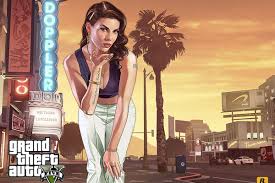 this game is men. For the first three missions of GTA: V, I played a male character to complete the mission. The women were solely operating as props for the male gaze. More specifically, the white male gaze.
this game is men. For the first three missions of GTA: V, I played a male character to complete the mission. The women were solely operating as props for the male gaze. More specifically, the white male gaze.
Despite my reservations, I continued to play the game. The second mission of the game included two black men who were stealing cars from a rich white mans home. The goal of this mission was two-prong: steal the car and follow the leading driver to the dropoff spot. Before I started controlling the characters, the game set up some dialogue between the two men. Their language was filled with ebonics terms and a copious amount of unnecessary “n-words” flowing through the conversation. The actual content of the dialogue became unimportant. The type of language was a marker for the caricature of a gang affiliated black man. The characterization of these two black men lent itself to “ a narrative anchored by ideologies and tropes of race, gender, and class. It [relied] on a worldview that sees the Black community as [devoided] of morality or humanity”(Leonard 134). They were dressed in baggy clothes with gold chains and tasked with stealing cars. Their characters were crafted by real-life tropes of black identity that disregard any authentic representation of the black body. Therefore, reinforcing the racial discrimination of black men.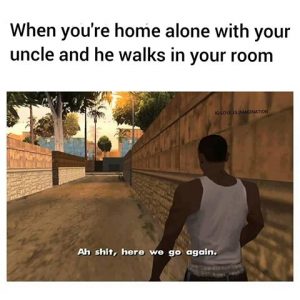
As I continued through the mission, I was able to become this black male character. I was in control of his driving ability and mobility. At any point, I could have picked a fight with a random bystander and steal their car. The games’ function of horseplay becomes racialized when the game players are giving complete autonomy in racially crafted communities. Leonard states that “games, despite claims of horseplay, offer insight into dominant ideologies… From the privacy of one’s home, game players are able to transport themselves into foreign and dangerous environments, often gaining pleasure through domination and control of weaker characters of color”(Leonard 1). One can completely be disconnected from the identity of the character they are operating and complicit in reinforcing their own biases in their actions. Therefore, the player is able to benefit from a dangerous amount of control.
However, all of these things did not stop me from playing the game. I was able to become completely emersed in the game. I wanted to win. Even if I had run over a few people to get there.
747
